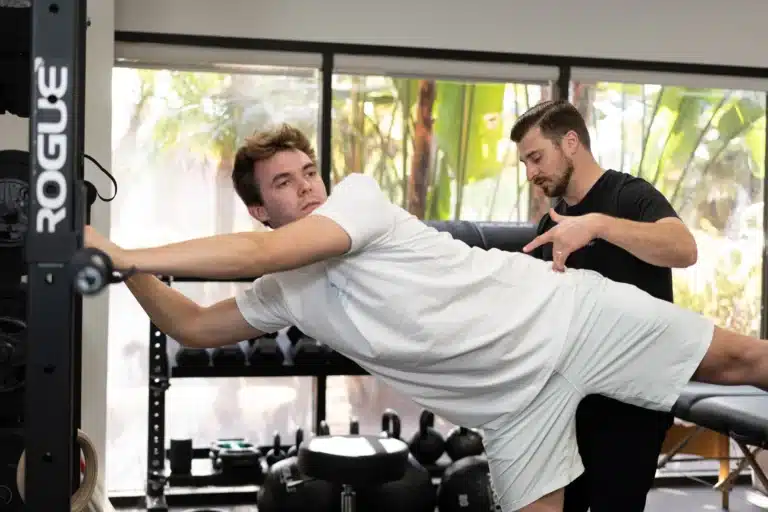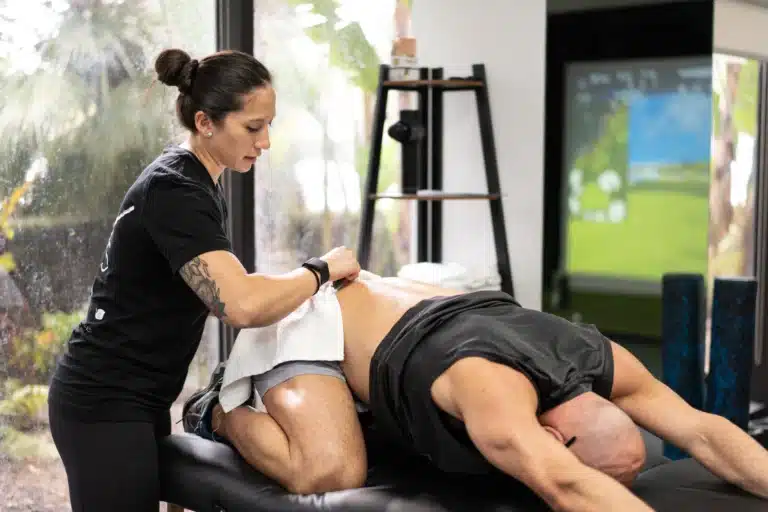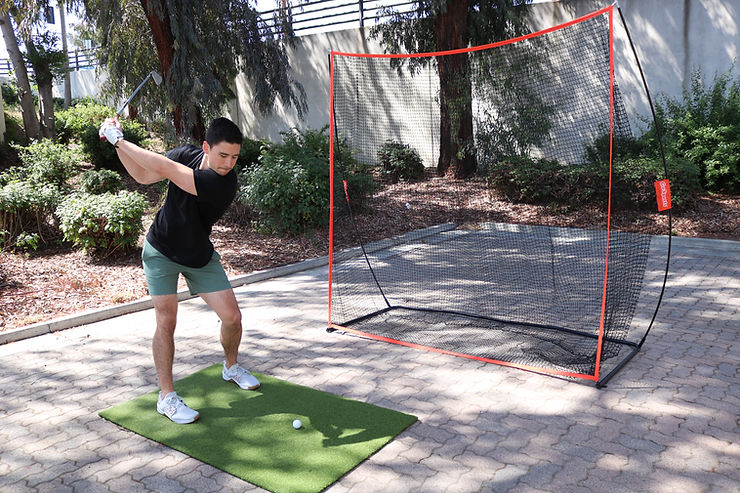Physical therapy plays a pivotal role in helping adults recover from injuries, manage chronic conditions, and improve their quality of life. As we age, the body becomes more susceptible to musculoskeletal injuries and chronic pain, making adult physical therapy an essential tool for maintaining and enhancing physical function. Whether you’re recovering from orthopedic surgery, dealing with ankle pain, or managing the long-term effects of a traumatic brain injury, adult physical therapy can help restore your mobility, reduce pain, and prevent future injuries. By seeking adult physical therapy near me, you can find personalized treatment options tailored to your needs.
What Is Adult Physical Therapy?
Adult physical therapy is a healthcare service designed to help adults recover from a variety of injuries, improve their mobility, and regain independence. It involves working with a physical therapy team, which may include occupational therapists, speech therapists, and athletic trainers, to address conditions ranging from muscle pain and joint mobility issues to traumatic brain injury and neck pain. Through comprehensive evaluations, physical therapists design treatment plans that target the root causes of pain and movement limitations, allowing adults to return to their daily activities and improve their overall function.
Adult Physical Therapy Treatment
Physical therapy offers a wide range of treatments to address various conditions and help adults regain their activity levels. Below are some of the most common treatment methods used in adult physical therapy:
Spine and Extremity Rehabilitation
This focuses on restoring mobility and function in the spine and extremities, often through manual therapy techniques and joint mobilizations. It’s especially beneficial for individuals dealing with conditions such as musculoskeletal pain and muscle pain in the upper or lower body. For adults experiencing physical therapy for adult scoliosis, targeted exercises can alleviate discomfort and improve spinal alignment.
Sports Rehabilitation
Athletes and active adults recovering from ankle injuries or joint pain benefit from sports rehabilitation, which focuses on improving strength, flexibility, and mobility to restore optimal performance. This type of therapy often includes a variety of exercises designed to help individuals return to their sport safely.
Joint and Soft Tissue Mobilization
Joint mobilizations and soft tissue techniques are used to improve joint mobility, flexibility, and reduce acute pain. This treatment is particularly helpful for patients recovering from orthopedic surgery or experiencing musculoskeletal injuries.
Functional Mobility Training
Patients who have difficulty performing activities of life—such as walking, climbing stairs, or getting in and out of bed—benefit from functional mobility training. This type of therapy focuses on improving daily living skills and helping individuals become more independent in their daily activities.
Gait and Balance Training
For those struggling with balance skills or at risk of falls, gait training and balance-retraining exercises can improve stability and coordination. These treatments are essential for adults recovering from a stroke, brain injury, or general deconditioning.
Neuromuscular Re-Education
Neuromuscular re-education involves retraining the nervous system and muscles to work together more efficiently. This is particularly useful for adults who have suffered a traumatic brain injury, stroke, or other neurological conditions. It helps improve motor control, coordination, and overall function.
Therapeutic Exercise
A key component of adult physical therapy, therapeutic exercise involves a structured plan of movements aimed at strengthening muscles, improving flexibility, and enhancing endurance. These exercises are tailored to each patient’s specific needs and may include activities to address musculoskeletal pain, joint pain, or upper extremity limitations.
Aerobic Conditioning
Designed to improve cardiovascular health, aerobic conditioning is often used in conjunction with other treatments to enhance endurance and stamina.
Low-impact aerobic activities like walking, cycling, or swimming should be performed for 30 to 40 minutes, three times a week, on days that alternate with strength-training exercises. This routine not only enhances cardiovascular health but also complements other physical therapy treatments aimed at improving endurance and stamina.
Pain Evaluation and Treatment
Physical therapists are experts in diagnosing and treating pain, including acute pain and chronic conditions like arthritis. They use a combination of manual therapy techniques, therapeutic exercises, and modalities such as ultrasound or electrical stimulation to manage pain effectively.
Equipment Prescription
In some cases, adults may require assistive devices such as walkers, canes, or orthotics to aid in mobility. Physical therapists assess each patient’s needs and provide personalized care through the prescription of these devices, ensuring optimal support during recovery.
Who Benefits from Physical Therapy?

Adult physical therapy benefits individuals dealing with a wide array of conditions and injuries. Here are some of the common conditions that can be treated through physical therapy:
- Arm or leg injuries – Including fractures, sprains, or musculoskeletal injuries.
- Chronic conditions – Such as arthritis, multiple sclerosis, or muscular dystrophy, which can be managed through ongoing therapy.
- Limitations from stroke, heart attack, or amputation – Therapy helps individuals regain function and independence.
- Generalized deconditioning – Adults with reduced strength and endurance can improve through structured rehabilitation programs.
- Work-related injuries – Including repetitive stress injuries like tendonitis and bursitis.
- Spinal cord injuries – Physical therapy aids in maximizing functional recovery after spinal trauma.
- Surgical repair of the arm, leg, or spine – Rehabilitation helps restore strength and mobility following surgery.
- Open wounds – Therapy promotes healing and prevents complications.
- Neurological conditions or stroke – Physical therapy helps restore mobility and coordination for those with brain or nerve damage.
- Loss of balance or difficulty walking – For individuals at risk of falls, gait training and balance-retraining exercises are crucial.
Benefits of Adult Physical Therapy
The benefits of adult physical therapy are extensive, helping individuals recover, manage chronic pain, and prevent future injuries. Here are some of the top benefits:
Pain Management
Whether you’re dealing with ankle pain, neck pain, or chronic conditions the key benefit of adult physical therapy is its ability to effectively manage and alleviate pain. Through a variety of techniques such as manual therapy and therapeutic exercises, physical therapists address chronic and acute pain conditions without relying on medication.
A survey conducted by the Special Eurobarometer on Sport and Physical Activity revealed that the most significant obstacle to engaging in physical exercise is a lack of time, with 42% of respondents citing this as the primary reason. This highlights the importance of prioritizing your health and finding time for physical therapy, as it can reduce pain and improve quality of life, even with a busy schedule.
Improved Mobility and Flexibility
Physical therapy improves joint mobility and enhances flexibility, making it easier for patients to perform daily activities. This is particularly beneficial for individuals recovering from orthopedic surgery or managing conditions like arthritis.
Enhanced Strength and Endurance
Through variety of exercises, physical therapists help patients regain strength and stamina, enabling them to perform everyday tasks with ease. For athletes, this also means a faster return to their sport.
Prevention of Future Injuries
One of the most significant benefits of adult physical therapy is injury prevention. By improving strength, flexibility, and balance, therapists reduce the risk factors for future injuries, especially for those who are at risk of falls.
Types of Adult Physical Therapy
Physical therapy for adults is available in many different settings, each offering tailored treatment options based on the patient’s needs.
Outpatient Adult Therapy
This common form of therapy is available at physical therapy clinics, where patients can receive treatment for variety of injuries and conditions. These clinics offer personalized treatment plans and access to rehabilitation specialists.
Specialized Therapy for Women
Women’s health issues, such as pelvic floor dysfunction and osteoporosis, are often treated through specialized programs that focus on improving strength, mobility, and overall wellness.
Geriatric Physical Therapy
As adults age, they may experience conditions like arthritis, osteoporosis, and balance disorders. Physical therapy for the older adult focuses on addressing these issues, offering treatments like gait training, balance exercises, and therapy aimed at improving independence and quality of life.
Physical therapists are crucial in treating older adults with physical impairments. The evaluation process involves selecting the appropriate patients and conducting a thorough review of their medical, social, and functional history. A physical examination focusing on the neuromusculoskeletal system is also essential. This comprehensive evaluation ensures that older adults receive personalized care that addresses their unique needs, leading to better outcomes in mobility and independence.
What Does a Physical Therapist Do?
A physical therapist’s role is to assess each patient’s condition and develop a personalized care plan tailored to their needs. The process begins with an initial evaluation, during which the therapist conducts a thorough examination to identify any risk factors or areas of concern. The therapist then uses a combination of manual therapy, therapeutic exercise, and advanced care techniques to promote healing, reduce pain, and improve function.
How to Choose the Right Physical Therapist
Choosing the right physical therapist can be a critical step in your recovery. Look for a therapist with advanced training and experience in treating your specific condition. A strong track record of success, as well as access to a comprehensive team of clinical specialists, occupational therapists, and athletic trainers, can help ensure you receive the best possible care.
Why Choose Physical Therapy at The Movement Schopp?
At The Movement Schopp, we specialize in providing comprehensive and personalized adult physical therapy to help you regain mobility, manage pain, and enhance your overall well-being. Whether you are recovering from an injury, surgery, or managing a chronic condition, our expert team is dedicated to delivering high-quality care tailored to your unique needs. We offer a range of treatments designed to improve strength, flexibility, and independence, helping individuals from all walks of life. Discover more about who we help, and take the first step toward your recovery by requesting an appointment today.
What Should I Do to Prepare for a Physical Therapy Visit?

Before your first visit, it’s important to gather any relevant medical information, including surgery or injury details. Wear comfortable clothing that allows for easy movement and be ready to discuss your goals and concerns with your therapist. The therapist will conduct a comprehensive evaluation during your first appointment to develop a customized treatment plan that fits your needs.
Conclusion
Adult physical therapy offers a wide range of benefits, from pain relief to improved mobility and injury prevention. Whether you’re recovering from a variety of injuries, managing musculoskeletal pain, or seeking to improve your daily activities, physical therapy can help you regain control of your health and well-being.
FAQs
How often should I attend physical therapy sessions?
The frequency of your sessions will depend on your specific condition and goals. In most cases, patients attend therapy 1-3 times per week.
Can physical therapy help with chronic pain management?
Yes, adult physical therapy is highly effective for managing chronic pain. Therapists use a combination of manual therapy techniques, exercises, and pain-relief modalities to help patients reduce discomfort and improve function.
What are the signs that I may need physical therapy?
If you experience persistent joint pain, difficulty with daily activities, or have recently undergone surgery or sustained an injury, it may be time to consult a health care provider or a physical therapy clinic.




